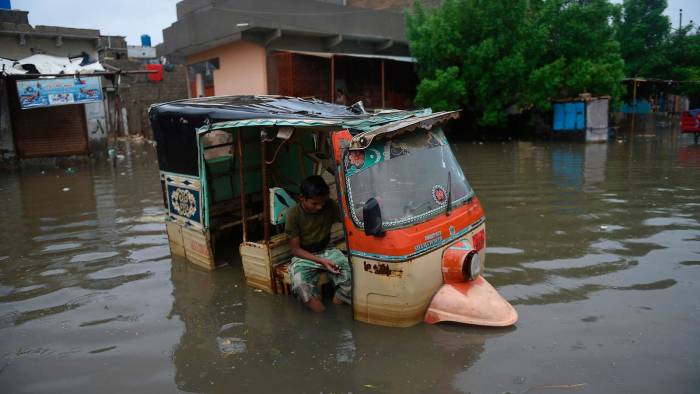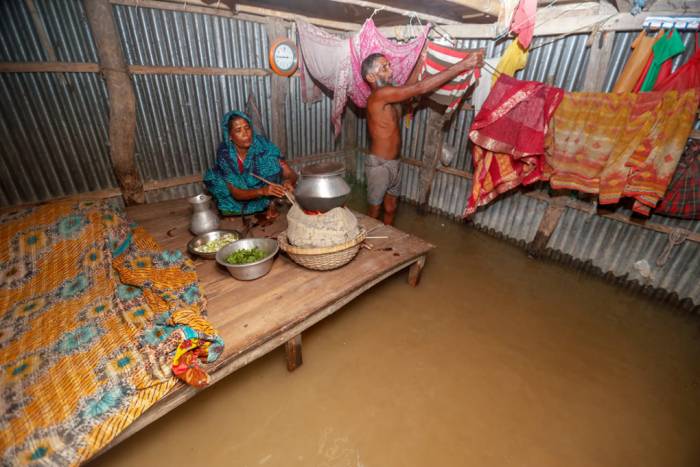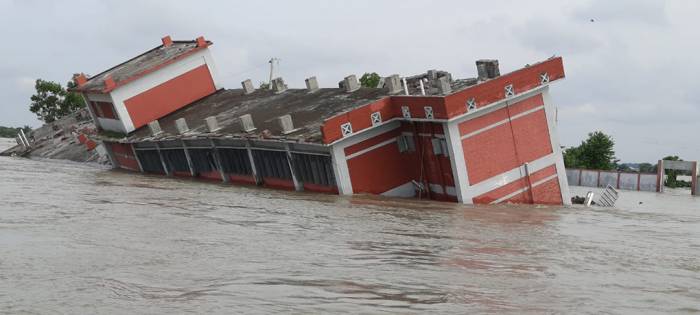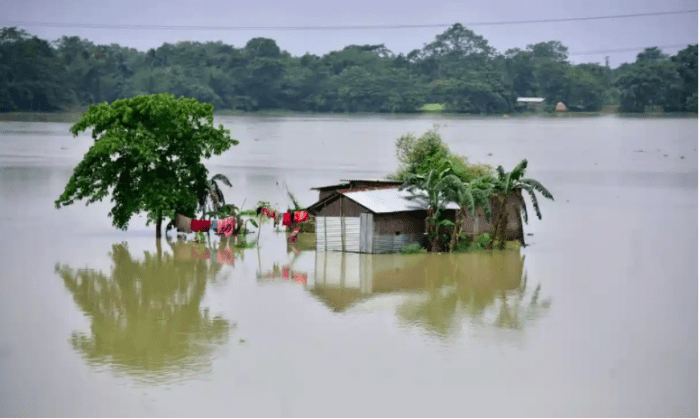From Pakistan to Bangladesh, more than 9.6 million people are affected as floods have inundated South Asian countries. Monsoons and flooding are a yearly affair but what is different this time is the sheer scale and extent of the devastation. The impacts of global warming are already being felt in South Asia as experts predict more landslides and flooding in the region.
Pakistan

A half-submerged tuk-tuk in flooded Karachi, Pakistan. Photo: Sky News

People push a tanker to safety in Karachi. At least 13 people have been killed by urban flooding in the southern Pakistani city of Karachi, the country’s largest city and its commercial hub. Photo: Akhtar Soomro/Reuters
Afghanistan

At least 100 people have died in flash flooding in northern Afghanistan’s Parwan province, officials say. Photo: BBC News
Bangladesh

One of the many homes flooded along the Padma river. Photo: Thirdpole.net

A building that collapsed in the 2020 floods. Photo: Thirdpole.net
Nepal

Heavy rains triggered flash floods and landslides that killed at least 40 people and displaced thousands in western Nepal. Photo: DW
India

A partially submerged house is seen at the flood-affected Mayong village in Morigaon district, in the northeastern state of Assam, India on 29 June. Photograph: Anuwar Hazarika/Reuters
In the midst of a pandemic, these floods prove that the climate crisis hasn’t taken a break. Rather, the effects of it are more devastating than ever. In the last few months, South Asia has already faced repeated climate impacts like Super Cyclone Amphan, heatwaves, and the locust swarm attack, all while the Himalayan glaciers, also known as the Third Pole, are melting at an alarming rate.
South Asian countries need to work together to move towards a Just Recovery post-COVID. This means setting a timeframe to phase out fossil fuels, building climate-resilient infrastructure, clean and efficient public transportation, and putting the health of citizens at the forefront.
Join the Just Recovery conversation in South Asia during this critical time.